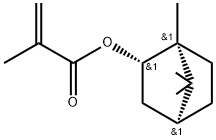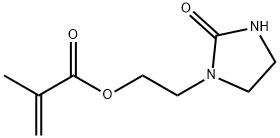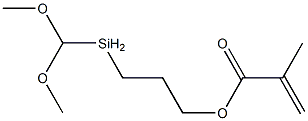Tetrahydrofurfuryl methacrylate
Synonym(s):(Tetrahydrofuran-2-yl)methyl methacrylate
- CAS NO.:2455-24-5
- Empirical Formula: C9H14O3
- Molecular Weight: 170.21
- MDL number: MFCD00014515
- EINECS: 219-529-5
- SAFETY DATA SHEET (SDS)
- Update Date: 2025-12-17 09:49:44

What is Tetrahydrofurfuryl methacrylate?
Chemical properties
Colorless liquid
The Uses of Tetrahydrofurfuryl methacrylate
Tetrahydrofurfuryl methacrylate is used as methacrylic component in dental materials, such as crown and bridge products; in artificial nails.
Definition
ChEBI: Tetrahydrofurfuryl methacrylate is a member of oxolanes.
What are the applications of Application
Tetrahydrofurfuryl Methacrylate (THFMA) is a clear water white to light yellow liquid. It has a 2.84 cps viscosity at 20°C. Poly(tetrahydro furfuryl methacrylate) [P(THFMA)] has been investigated as a biomaterial for encouraging articular cartilage repair because it possesses some unique characteristics with respect to its biocompatibility and behavior in water. Furthermore, its monomer was used as a tissue repair material[1].
References
[1] Sang-Ha Cho, Hun-Soo Byun, Bong-Seop Lee . “Phase behavior of tetrahydrofurfuryl methacrylate and poly(tetrahydrofurfuryl methacrylate) in supercritical carbon dioxide.” Journal of CO2 Utilization 25 (2018): Pages 39-45.
Properties of Tetrahydrofurfuryl methacrylate
| Boiling point: | 52 °C0.4 mm Hg(lit.) |
| Density | 1.044 g/mL at 25 °C(lit.) |
| vapor pressure | 27Pa at 20℃ |
| refractive index | n |
| Flash point: | 195 °F |
| storage temp. | Keep in dark place,Sealed in dry,Room Temperature |
| form | clear liquid |
| color | Colorless to Almost colorless |
| Specific Gravity | 1.044 |
| Water Solubility | 18.99g/L at 20℃ |
| Sensitive | Light Sensitive |
| BRN | 117423 |
| CAS DataBase Reference | 2455-24-5(CAS DataBase Reference) |
| NIST Chemistry Reference | 2-Propenoic acid, 2-methyl-, (tetrahydro-2-furanyl)methyl ester(2455-24-5) |
| EPA Substance Registry System | Tetrahydrofurfuryl methacrylate (2455-24-5) |
Safety information for Tetrahydrofurfuryl methacrylate
| Signal word | Warning |
| Pictogram(s) |
 Exclamation Mark Irritant GHS07 |
| GHS Hazard Statements |
H227:Flammable liquids H315:Skin corrosion/irritation H319:Serious eye damage/eye irritation H335:Specific target organ toxicity, single exposure;Respiratory tract irritation |
| Precautionary Statement Codes |
P302+P352:IF ON SKIN: wash with plenty of soap and water. P305+P351+P338:IF IN EYES: Rinse cautiously with water for several minutes. Remove contact lenses, if present and easy to do. Continuerinsing. |
Computed Descriptors for Tetrahydrofurfuryl methacrylate
| InChIKey | LCXXNKZQVOXMEH-UHFFFAOYSA-N |
New Products
4,4-Difluoropiperidine hydrochloride tert-butyl 9-methoxy-3-azaspiro[5.5]undecane-3-carboxylate Indole Methyl Resin N-Isopropylurea N,N-Dicyclohexylcarbodiimide(DCC) MELDRUMS ACID 5-METHYLISOXAZOLE-4-CARBOXYLIC ACID Magnessium Bis glycinate Zinc ascorbate 1-bromo-2-butyne 2-acetamidophenol 9(10H)-anthracenone Erythrosin B, 4-Piperidinopiperidine 2-((4-morpholinophenylamino) (methylthio) methylene) malononitrile 2,4-dihydroxybenzaldehyde 3-(4-morpholinophenylamino)-5-amino-1H-pyrazole-4-carbonitrile Methyl 2-methylquinoline-6-carboxylate 2,6-dichloro-4-nitropyridine 4-Bromo-2-chlorobenzonitrile 2-(benzylamino)acetic acid hydrochloride 4-(tert-Butoxycarbonylamino)but- 2-ynoic acid 3,4-dihydro-2H-benzo[b][1,4]dioxepine 1-Phenyl-1-cycloprppanecarboxylicacidRelated products of tetrahydrofuran

![[2-(METHACRYLOYLOXY)ETHYL]TRIMETHYLAMMONIUM METHYL SULFATE](https://img.chemicalbook.in/CAS/GIF/6891-44-7.gif)






You may like
-
 Tetrahydrofurfuryl Methacrylate (stabilized with MEHQ) CAS 2455-24-5View Details
Tetrahydrofurfuryl Methacrylate (stabilized with MEHQ) CAS 2455-24-5View Details
2455-24-5 -
 Tetrahydrofurfuryl methacrylate CAS 2455-24-5View Details
Tetrahydrofurfuryl methacrylate CAS 2455-24-5View Details
2455-24-5 -
 3-(4-amino-1-oxoisoindolin-2-yl)-1-methylpiperidine-2,6-dione 98%View Details
3-(4-amino-1-oxoisoindolin-2-yl)-1-methylpiperidine-2,6-dione 98%View Details -
 614-19-7 98%View Details
614-19-7 98%View Details
614-19-7 -
 20677-73-0 (2,2-diethoxyethyl)methylamine 98%View Details
20677-73-0 (2,2-diethoxyethyl)methylamine 98%View Details
20677-73-0 -
 3-(4-(hydroxyamino)-1-oxoisoindolin-2-yl)piperidine-2,6-dione 98%View Details
3-(4-(hydroxyamino)-1-oxoisoindolin-2-yl)piperidine-2,6-dione 98%View Details -
 57381-49-4 2-bromo-4-chlorobenzonitrile 98%View Details
57381-49-4 2-bromo-4-chlorobenzonitrile 98%View Details
57381-49-4 -
 4,6-dichloropyrimidine-5-carbaldehyde 98%View Details
4,6-dichloropyrimidine-5-carbaldehyde 98%View Details
5305-40-8
